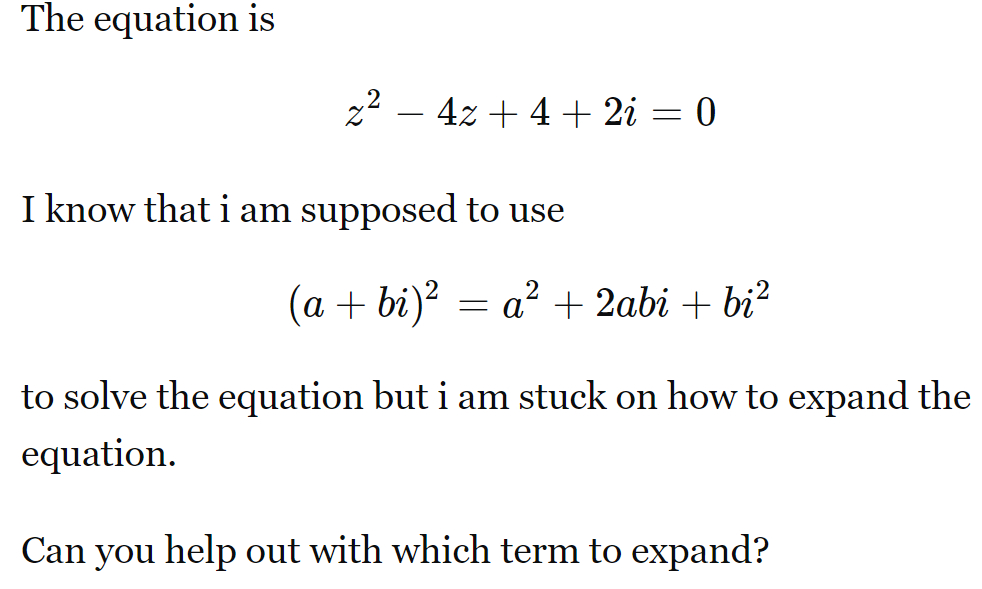Full solution
Q. The equation isI know that i am supposed to useto solve the equation but i am stuck on how to expand the equation.Can you help out with which term to expand?
- Factor the Quadratic: We are given the quadratic equation in the complex number : . To solve for , we can try to factor the equation or use the quadratic formula. First, let's see if the equation can be factored. We notice that the real part of the quadratic, , is a perfect square trinomial, which factors into . We can write the equation as .
- Set Real and Imaginary Parts Equal: Now, we can set the real part equal to the negative of the imaginary part to find the value of . This gives us . We need to take the square root of both sides to solve for . The square root of can be found by expressing in terms of its polar form and then taking the square root.
- Express in Polar Form: To find the square root of , we first express in polar form. The magnitude of is , and the angle (argument) is because the point lies on the negative imaginary axis in the complex plane. Therefore, in polar form, is represented as .
- Find Square Root of : The square root of is , because when we take the square root of a complex number in polar form, we take the square root of the magnitude and halve the angle. Therefore, the square roots of are and , since adding to the angle gives us the other square root in the complex plane.
- Convert Polar Form to Rectangular Form: Now we can write the two possible values for as and . To find the values of , we add to both sides of each equation. This gives us and .
- Final Solutions: We can convert the polar forms back to rectangular form to get the final answers. For , the rectangular form is . For , the rectangular form is . Therefore, the solutions for are and .
- Final Solutions: We can convert the polar forms back to rectangular form to get the final answers. For , the rectangular form is . For , the rectangular form is . Therefore, the solutions for are and .Simplifying the expressions for , we get and as the roots of the equation .

